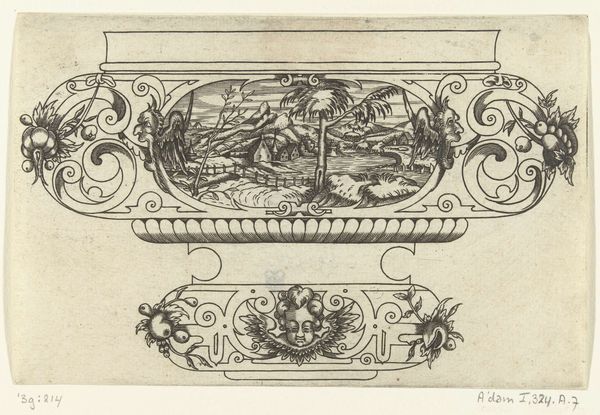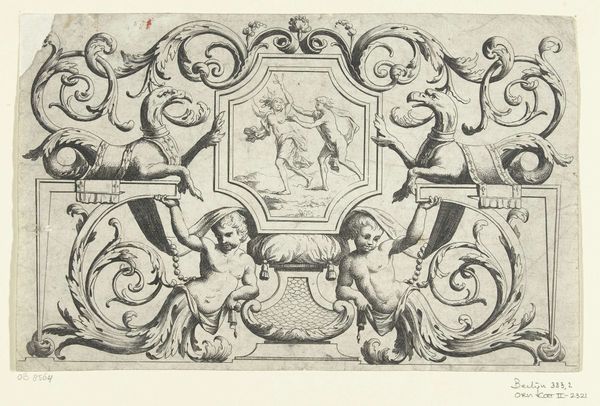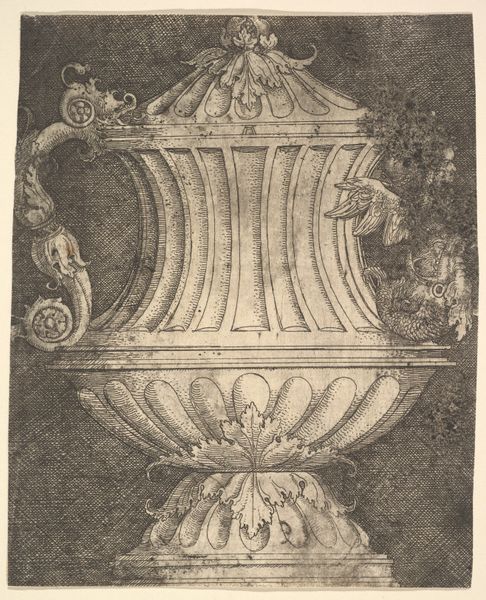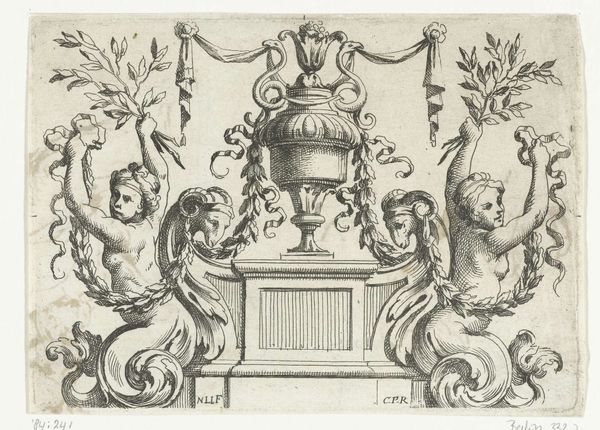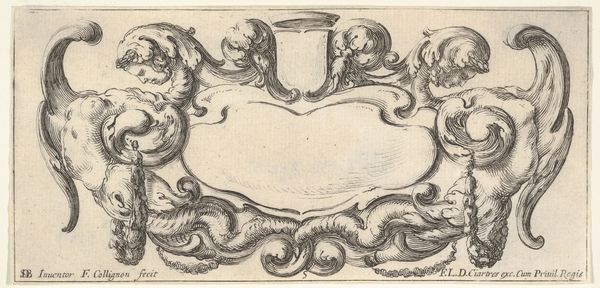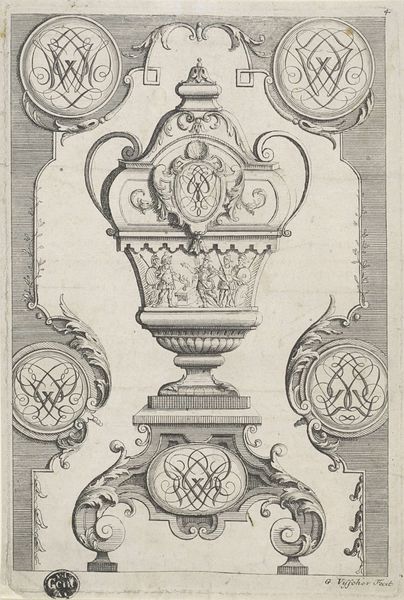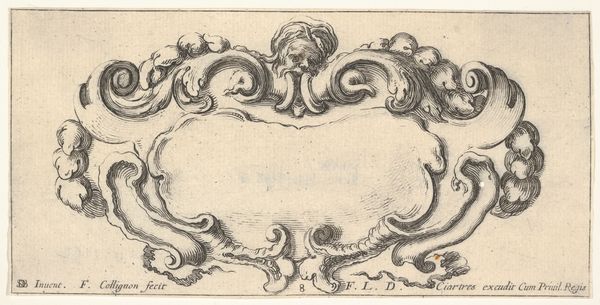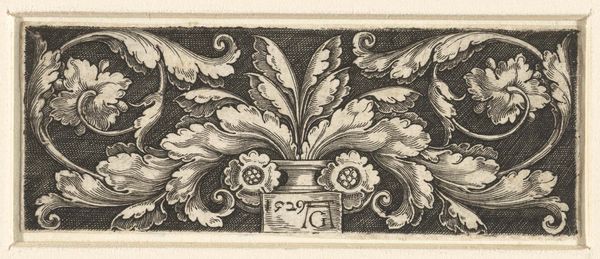
ornament, print, engraving
#
ornament
#
baroque
# print
#
figuration
#
11_renaissance
#
engraving
Copyright: National Gallery of Art: CC0 1.0
Editor: Here we have an engraving titled "Ornament with a Vase between Two Genii" by Sebald Beham, dating back to the Renaissance. It features these symmetrical cherubs and elaborate foliage. It has an airy yet precise feel. What jumps out at you when you look at this? Curator: The piece presents a fascinating tension. Ostensibly, it’s decorative, a Baroque-era ornament, seemingly detached from the social upheaval of the time. But, consider this: How accessible were these "ornaments"? Who could afford them, and what did their consumption signify within the burgeoning class structures of the Renaissance? Editor: I hadn’t thought about it that way. So, the ornament itself becomes a symbol of power? Curator: Precisely. The very act of acquiring and displaying such a piece would underscore social stratification. And the figures themselves–these cherubic "genii"–are they truly innocent, or do they, too, reflect the social control mechanisms at play? Consider the idealized forms, the deliberate classicism: Whose ideal is being represented and at whose expense? Editor: It’s easy to get lost in the details and forget the bigger picture. Curator: That's right. It is a useful skill to look at an artwork like this, beautiful on the surface, and ask yourself, “What are the power dynamics embedded in this seemingly innocuous scene? What narratives are being reinforced, and which are being suppressed?” Editor: So, beyond just aesthetic appeal, we should also examine the work’s socio-economic context and what it communicates about the period's values and hierarchies. I will never look at "ornaments" the same way. Curator: That’s the goal – to constantly question the visual language surrounding us and decode its implicit messages. The real art lies not just in its creation, but also in its critical interpretation.
Comments
No comments
Be the first to comment and join the conversation on the ultimate creative platform.

